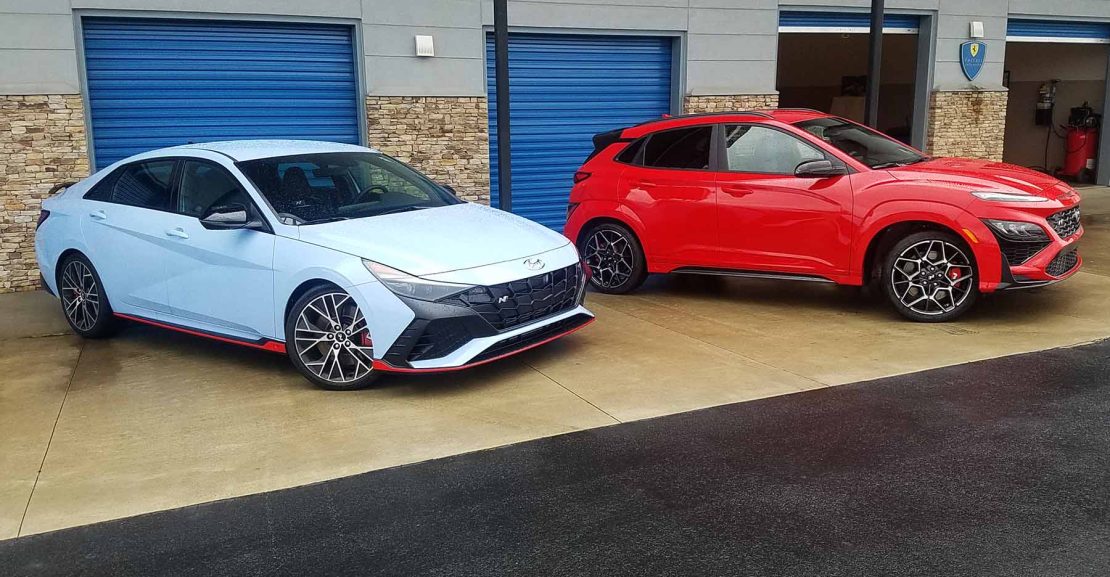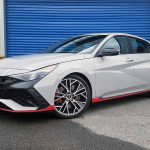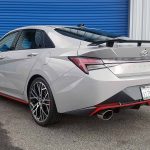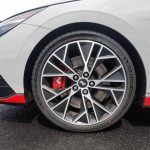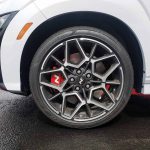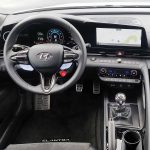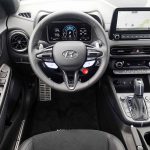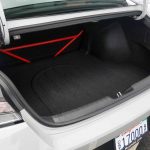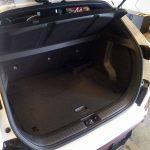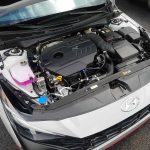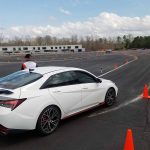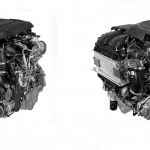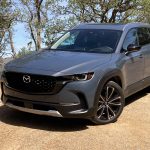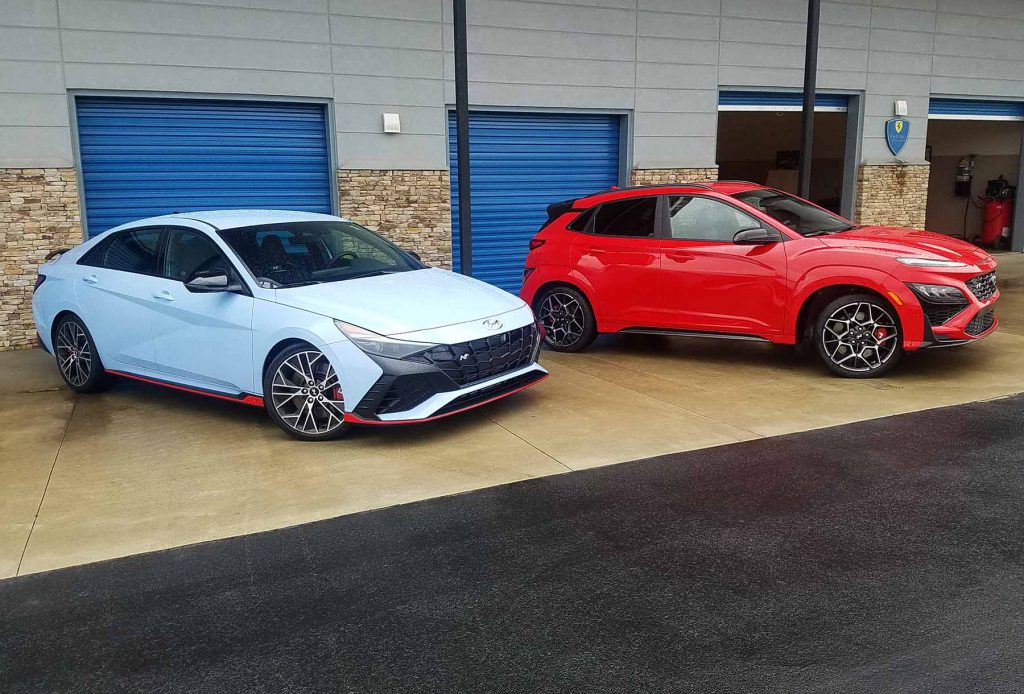
Ah, the factory hot-rodded compact car. It’s a genre that really came into its own during the first decade of the new millennium, influenced in part by the import-tuner craze and the unexpected blockbuster success of the 2001 movie The Fast and the Furious. Before long, several mainstream-brand manufacturers were offering snarky, youth-oriented versions of their bread-and-butter compact sedans and hatchbacks, with performance-tuned suspensions and gutsy turbocharged powerplants.
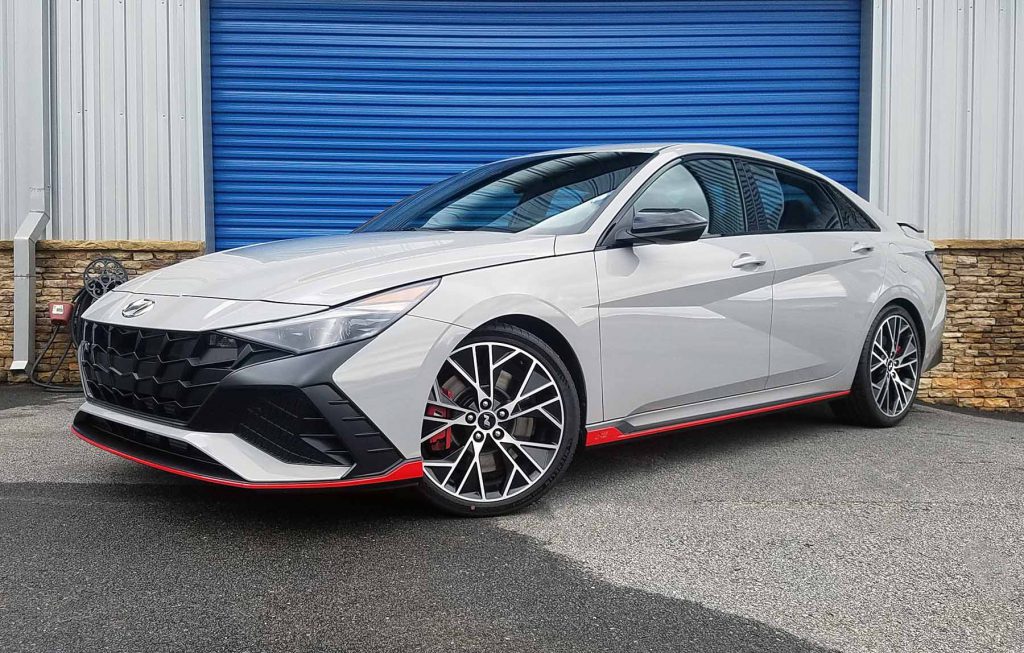
The segment seemed to dwindle somewhat as the 2000s progressed into the 2010s, and some key players fell away (one of our favorites, the Mazdaspeed 3, was dropped after 2013, and the Ford Focus ST and RS were discontinued after 2018). However, Hyundai decided the segment was still viable enough to step into the ring for 2019, when it kicked off its high-performance N brand with the introduction of the Veloster N—a delightful “track-rat” version of its novel, redesigned-for-2019 three-door hatchback.
Future Collectibles: 2019-2021 Hyundai Veloster N
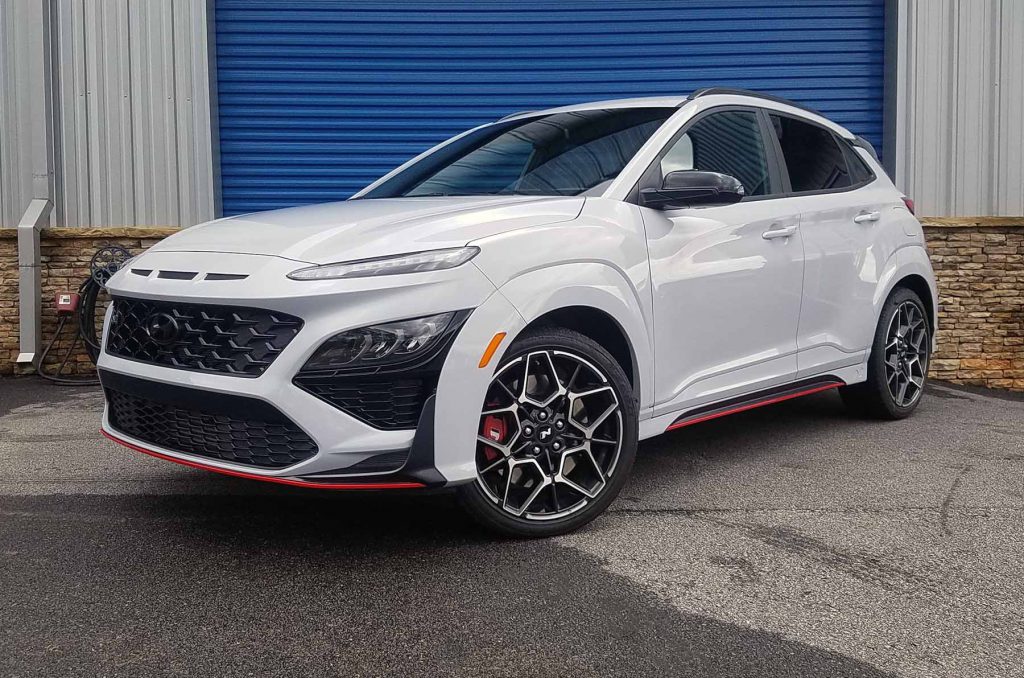
For 2022, the Veloster N gains a couple stablemates, as Hyundai launches N versions of its redesigned-for-2021 Elantra compact sedan and refreshed-for-2022 Kona subcompact SUV. Hyundai says its N vehicles are “born in Namyang [Hyundai’s R&D center in South Korea], honed at Nurburgring [the legendary race/testing track in Germany].” They’re Hyundai’s top-line performance models, and the company says they adhere to three core product pillars: “Everyday Sports Car,” “Corner Rascal,” and “Racetrack Capability.” The N vehicles are engineered to be track-ready off the showroom floor, with no upgrades needed, and exhibit an invigorating, rascally character in spirited driving—but also be tractable and comfortable enough to be used as a daily driver.
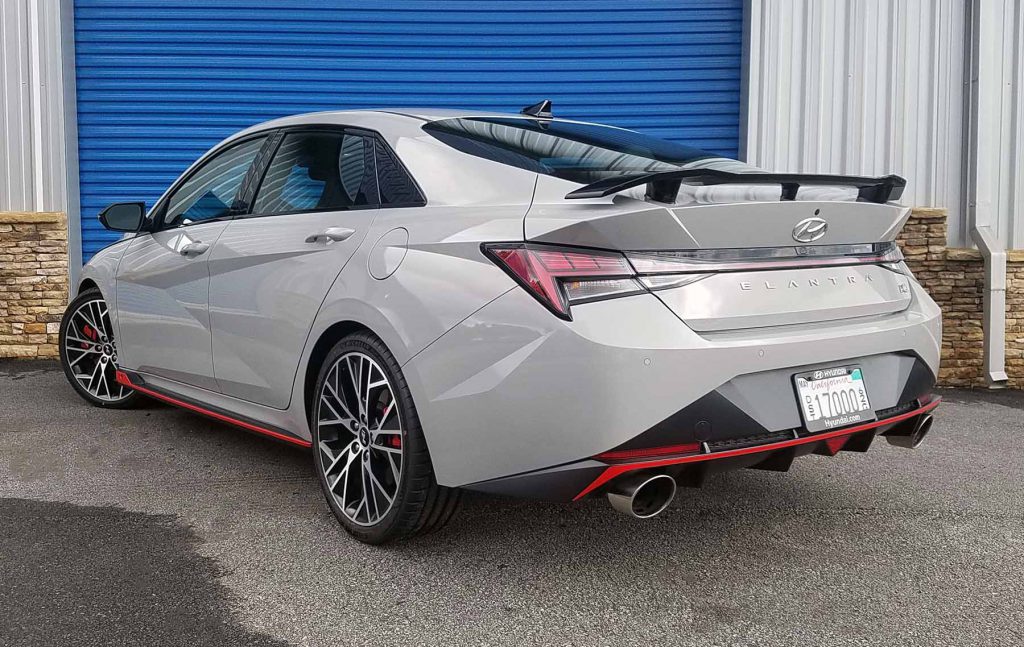
Hyundai invited us to a press event in Atlanta, where we got to drive the Elantra N and Kona N on the track at Atlanta Motorsports Park, as well as on the street and on an autocross course, to see how they live up to the N-brand ethos. We also got to reacquaint ourselves with the Veloster N, which is unchanged for 2022, at the same event. We were especially curious to see how the Kona N would fare, since this genre-bending vehicle is more or less the first of its kind—race-track-oriented performance enhancements haven’t been applied to a subcompact SUV before. How would the N formula translate on a small SUV?
Meet the 2022 Consumer Guide Best Buys
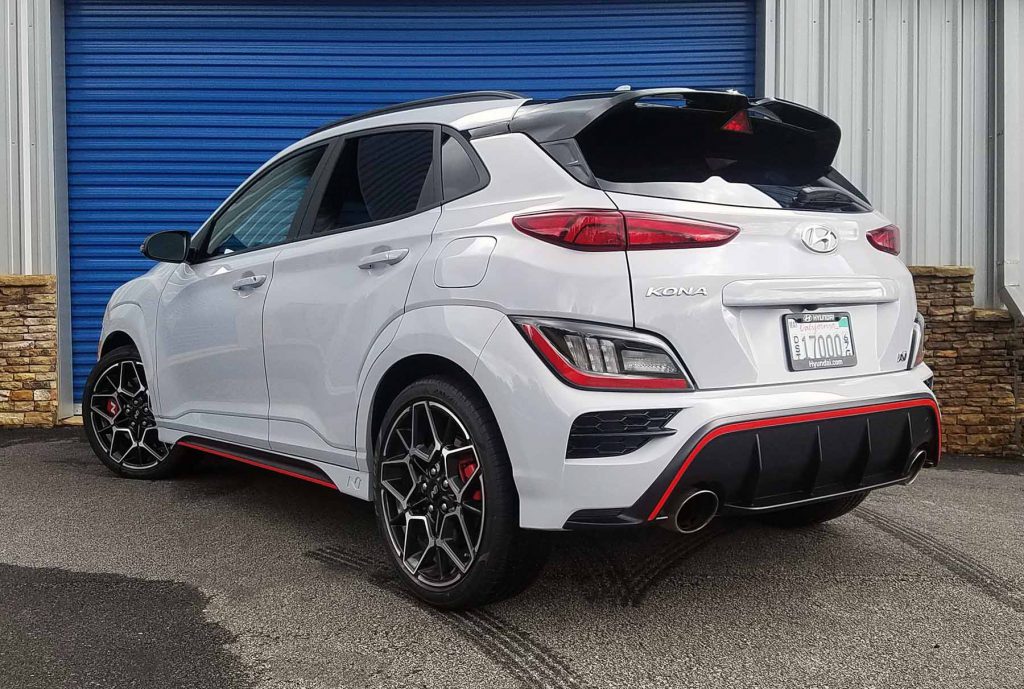
The Elantra N and Kona N share the same engine—a turbocharged 2.0-liter 4-cylinder that puts out 276 horsepower and 284 pound-feet of torque. (The Veloster N has this basic powertrain as well, but it’s rated at 275 hp and 260 pound-feet of torque.) The Elantra N offers a choice of a traditional 6-speed manual transmission or an 8-speed dual-clutch automatic transmission (DCT) with a manual-shift mode and steering-wheel-mounted paddle shifters; the Kona N comes only with the latter.
Quick Spin: 2021 BMW M4 Competition Coupe
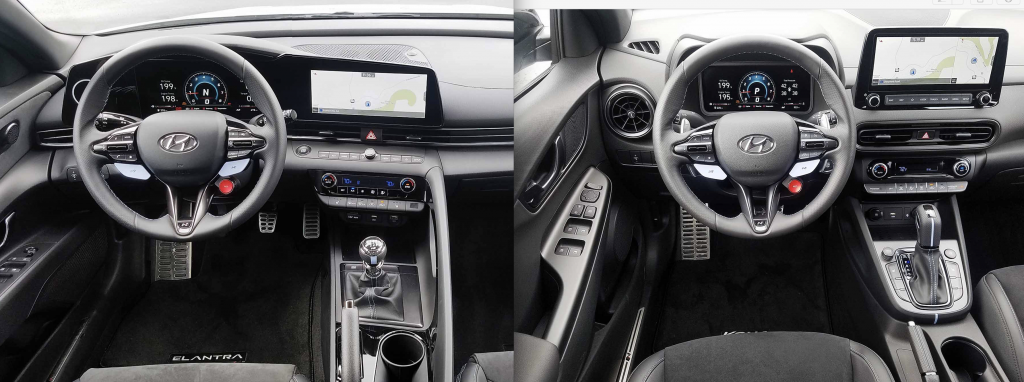
DCT-equipped models have an “N Grin Shift” “overboost” function that allows a maximum output of 286 horsepower for 20 seconds (the feature requires 40 seconds of cool time before it can be used again). Both the DCT and the Elantra N’s 6-speed manual have a driver-selectable rev-matching feature that automatically matches the engine’s RPM with the shifting RPM when downshifting, like a skilled driver using a “heel-and-toe” pedal technique. The DCT also comes with a driver-activated launch-control feature that optimizes acceleration from a standing start.
Muscle-Car Face-Off: 2021 Ford Mustang Mach 1 vs Shelby GT500
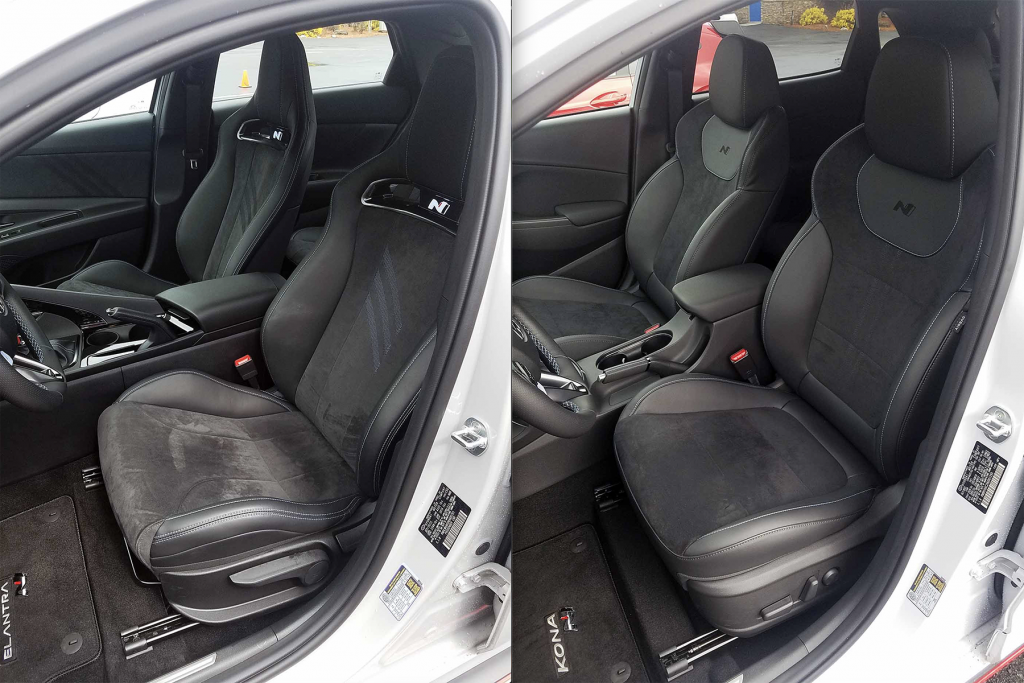
The “N Corner Carving Differential” (an electronically controlled limited-slip differential) sends more power to the outside wheel when cornering to improve traction and handling and help prevent understeer. Both the Elantra N and Kona N come solely with front-wheel drive; unlike the rest of the Kona lineup, the Kona N isn’t available with all-wheel drive. Hyundai representatives explained that this was a strategic decision—AWD adds weight and costs that would have pushed the Kona N beyond what product planners considered a viable price range.
Test Drive: 2021 BMW 430i xDrive Coupe
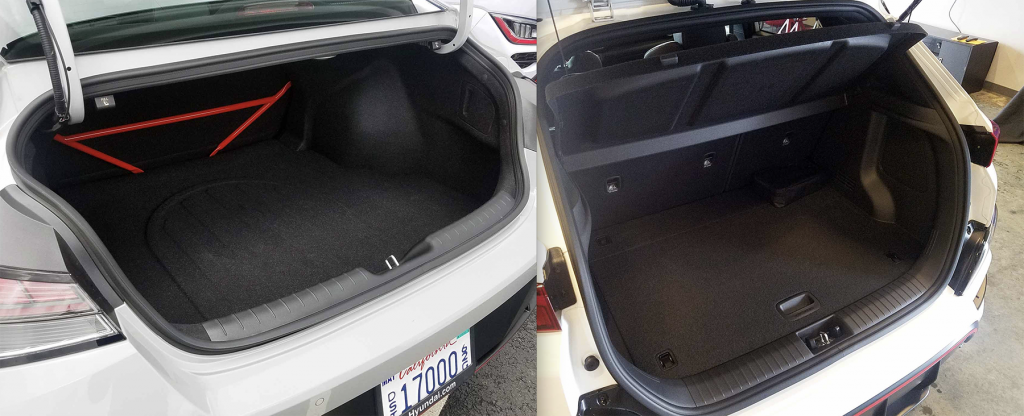
The core architecture of both vehicles is reinforced to improve rigidity for better ride and handling. For example, the Kona N’s body structure gets additional spot welds, and the Elantra N is outfitted with a rear chassis brace at the trunk wall, just behind the rear seat. Hyundai says that the brace enhances chassis rigidity by 29 percent, which is probably worth the tradeoff in cargo versatility to the buyers of this car. (The rear seatback still folds, but the brace makes it impossible to slide larger items through the opening.)
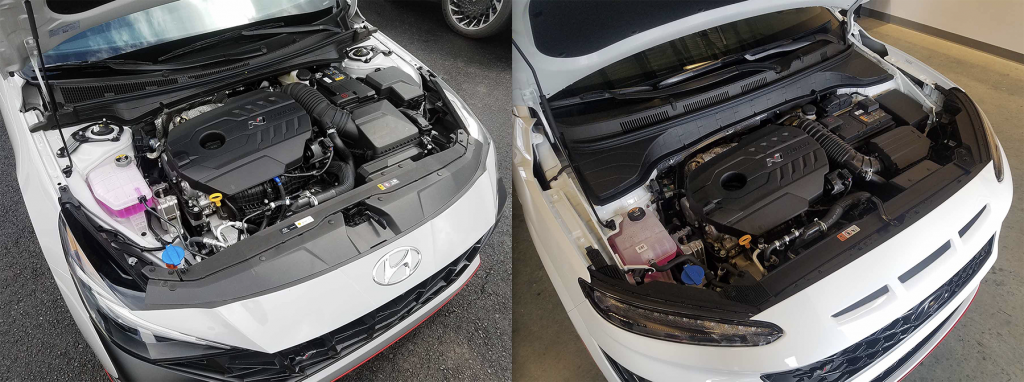
Both the Elantra N and Kona N have rack-mounted, performance-tuned steering with a quicker gear ratio, as well as an electronically controlled suspension with adjustable damping settings that the driver can select via the Normal, Sport, and N drive modes. The brakes get special calipers and upsized rotors: 14.2 inches up front and 12.4 inches out back, compared to 11 inches and 10.3 inches, respectively, on non-N Elantras and Konas. There’s also added suspension-arm hardware to guide airflow to the brakes for cooling, and a heat shield to help protect the engine compartment from excess brake heat.
Test Drive: 2021 Hyundai Sonata N-Line
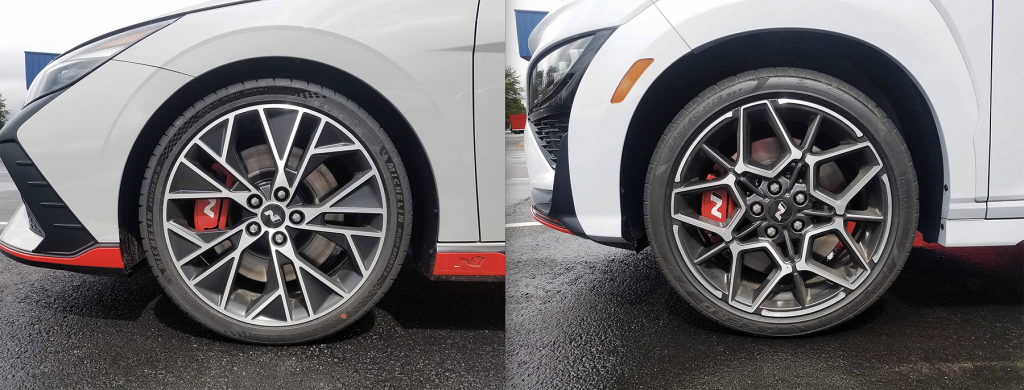
Naturally, the rolling stock is upgraded as well. The Elantra N is outfitted with 19 x 8.5-inch wheels on 245/35R19 Michelin Pilot Sport 4S summer tires, while the Kona N has 19 x 8.0-inch wheels on 235/40R19 Pirelli P Zero summer tires. In keeping with the expectations of a crossover SUV versus a traditional passenger car, the Kona N’s slightly taller tire sidewalls and higher ride height provide a touch more coarse-terrain ability, but we wouldn’t take it on anything more challenging than a gravel road.
Rides and Rock: 5 Car Commercials with Great Music

The expected body styling add-ons are part of the deal too; both vehicles get red lower-body accents, unique front and rear fasciae, side-sill moldings with an embossed N logo, upsized exhaust outlets, and a wing-type rear spoiler. We think the Kona N wears its tarted-up look better than the Elantra. Maybe we’re dating ourselves here, but we vaguely recall a review of the redesigned-for-1982 Chevrolet Camaro that likened the aggressive look of the Z28’s blacked-out headlight coves to a football player wearing eye-black grease. The Elantra N’s front-fascia treatment looks like that football player got a little, uh, overzealous with the eye-black marker.
Test Drive: 2021 Kia K5 GT-Line
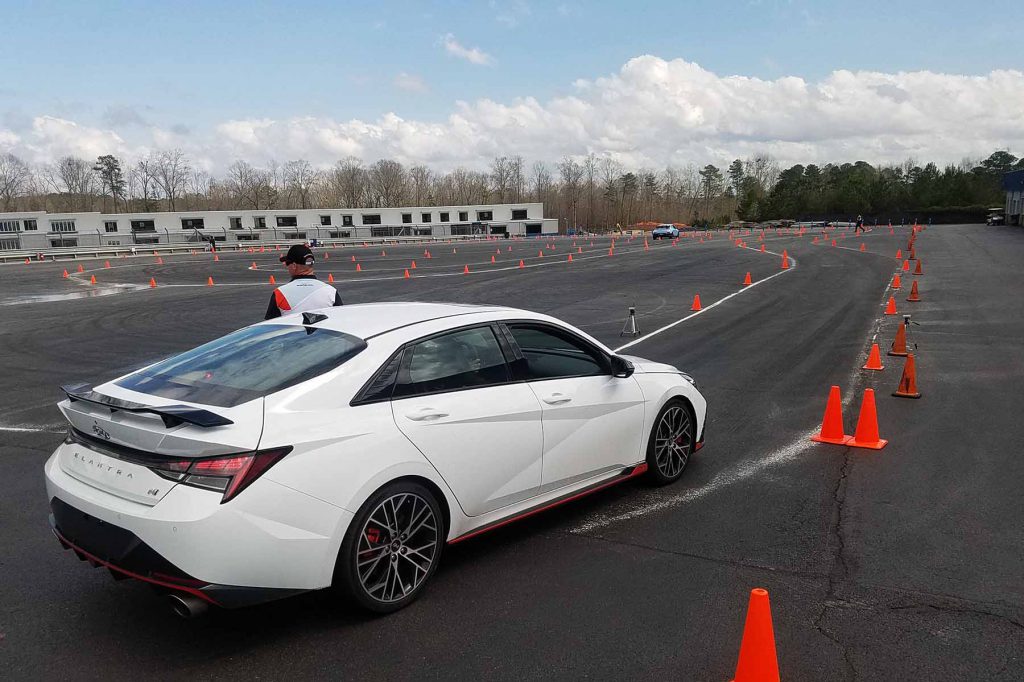
Inside, both the Elantra N and Kona N are generously equipped. Their standard features include a 10.25-inch digital gauge cluster and 10.25-inch infotainment touchscreen, heated front seats, premium audio system (Bose brand for the Elantra, Harman Kardon for the Kona), wireless charging pad, and the Hyundai Digital Key system (which enables you to use your smartphone to lock/unlock the vehicle and perform other functions).
The Hyundai SmartSense suite of active driver-assistance features is also standard—it includes Forward Collision Avoidance Assist, lane-keep assist, automatic high-beam headlights, driver attention monitor, blind-sport and rear cross-traffic monitors, and rear park-assist sensors (on the Elantra N only). The Kona N doesn’t get the rear park-assist sensors but does get Hyundai’s Safe Exit Assist system, which uses radar to detect vehicles approaching from the rear, and prevents the driver from deactivating the child-safety looks if an oncoming vehicle is detected. If the rear door is already open when a rear-approaching vehicle is detected, the system emits a visual and acoustic warning to warn the occupants.
We were especially impressed with the upscale look and feel of the Elantra N’s cabin, and the Kona N’s ambiance isn’t too far behind. The expected sporty touches are there—alloy sport pedals, dark-finish trim elements, an N steering wheel with drive-mode selector buttons, and sport front bucket seats. The Elantra N’s seats are notably racier than the Kona N’s—they’re lightweight units with more pronounced bolstering; integrated, non-adjustable headrests; race-style seat-belt pass throughs; and built-in illuminated N logos in the seat backs.
Test Drive: 2020 Ford Mustang EcoBoost

In addition to their actual high-performance hardware, the Hyundai N vehicles offer a high level of drive-mode configurability that adds to their appeal. In addition to the suspension-damping control, there are Normal, Sport, and N settings for the following parameters: engine, steering, transmission, limited-slip differential, and exhaust sound, as well as a regular and sport setting for the electronic stability control. Each of these parameters can be altered individually to create up to four custom drive-mode settings as well.
Changing the drive mode also changes the layout of the digital gauge cluster. Sport mode brings racier gauge graphics in red instead of the Normal mode’s cool blue-green, and the N mode display includes a centrally located tachometer (with the transmission’s selected gear shown in the center and the mph readout below it), along with large numerical readouts for oil temp, engine temp, turbo boost, and real-time torque output. The infotainment screen includes a built-in lap timer and a G-force meter that displays lateral and longitudinal Gs.
One of our favorite N features is the adjustable exhaust note. Choosing the N mode or a custom drive mode activates a delightfully (some might say obnoxiously) snarly “afterburn” exhaust sound with post-combustion snap-crackle-pop noises. Does this feature improve the vehicle’s measurable performance? Well, no, but it’s braaaap-tacular. A snarky attitude and a hooligan-ish vibe is part of the fun of vehicles like these, and one of the reasons enthusiasts buy them in the first place. And no worries… you can deactivate the extra noise if your passengers get annoyed, or you’re driving by the police station.
Forgotten Concept: Mercury Messenger
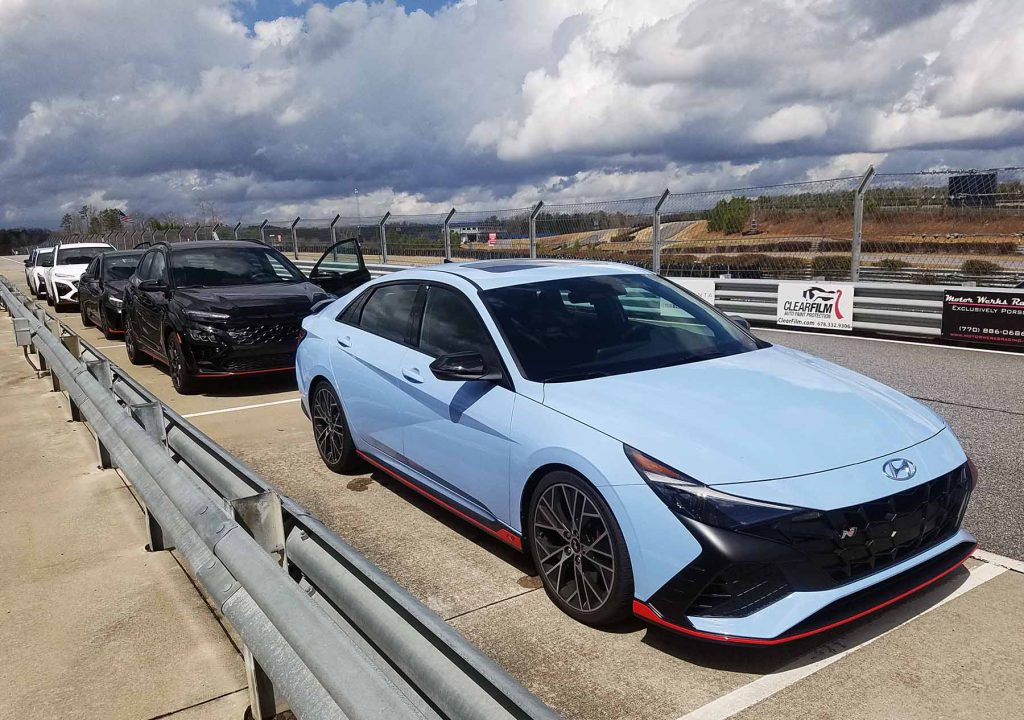
On the challenging corners and substantial elevation changes of the Atlanta Motorsports Park race course, the Elantra N felt balanced, composed, and playful. The steering is nicely weighted and accurate, and it offers excellent feedback. The communicative feel is especially helpful when you’re making minor steering-input adjustments in the midst of a speedy corner. At first, the manual-transmission Elantra N’s clutch pedal felt a bit too light for our tastes—it offers very little resistance—but we quickly grew to like it. It’s easy to modulate and it worked great in spirited driving on the track. Likewise for the shift-lever action—it feels “right” in both everyday driving and aggressive track use.
The Kona N doesn’t weigh a whole lot more than the Elantra N—its curb weight is 3340 pounds, compared to 3296 pounds for a DCT-equipped Elantra N (or 3186 pounds for an Elantra N with the manual), but its higher center of gravity hurts its handling by comparison. Hyundai hasn’t rewritten the law of physics here. The Kona N leans more in turns and feels a touch less buttoned down on the track than the Elantra N, but it’s still rewarding and fun to drive in its own way.
Despite its slightly lower-profile tires, the Elantra N might have the advantage in ride quality due to its longer wheelbase. In both vehicles, the ride is as taut as you’d expect—even in the Normal drive mode—but we never found it punishing. It’s perfectly acceptable, considering the cornering prowess and all-around athleticism these vehicles exhibit.
Hyundai’s official 0-60-mph times for the Elantra N are 5 seconds flat, with the Kona N right behind at 5.2 seconds—these times are for the DCT transmission with launch control enabled. We didn’t have the opportunity to do our own timed testing, but those numbers feel right by the seat of our pants. We took the Kona N and the manual- and DCT-equipped Elantra N through multiple laps on the autocross course, and the Elantras felt a step quicker off the line (though we’ll note that the best autocross lap times of the day were put down by a DCT-equipped Veloster N).
Test Drive: 2021 Toyota Corolla SE Apex Edition
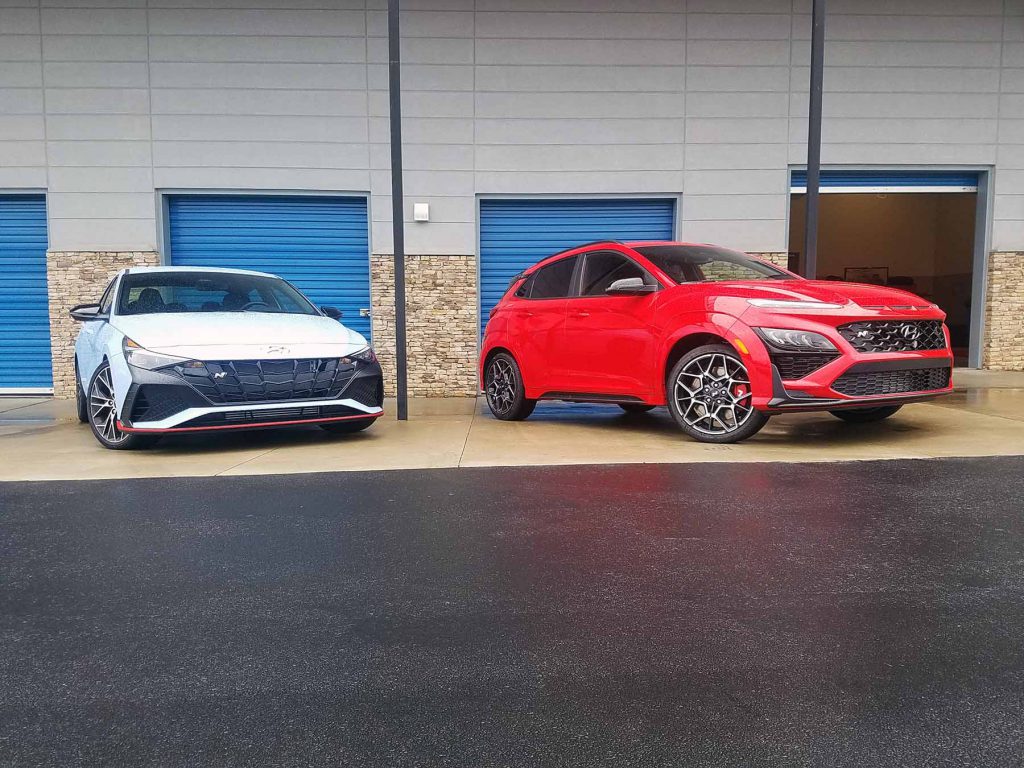
Of course, all those track-oriented features take their toll on fuel economy. The Kona N is EPA-rated at 20 mpg city/27 highway/23 combined, compared to 29/35/32 for a front-drive Kona N-Line or Limited model. The Elantra N is EPA-rated at 22/31/25 with the 6-speed manual transmission and 20/30/23 with the DCT, compared to an Elantra N-Line’s ratings of 25/34/28 with its manual transmission and 28/36/31 with its 7-speed dual-clutch automatic.
The Kona N and Elantra N (outside of transmission choice) are essentially “mono-spec” vehicles—the only options are accessory-type items such as cargo nets and rear-bumper appliques, and the priciest of these is a $250 set of roof-rack cross rails for the Kona. The Elantra N starts at $31,900 with the 6-speed manual transmission; choosing the 8-speed DCT tacks on another $1500. Add in the $1045 destination fee, and your bottom line is around $33,000 with the manual and $34,500 with the DCT. The Kona N starts at $34,200, with a slightly pricier destination fee of $1245. So, even with a few accessories, the bottom-line price will be less than $36K.
Their respective price points and level of performance mean that both of these hot-rod Hyundais occupy an intriguing place in the market. The Kona N really has no direct rivals. The Mini Countryman John Cooper Works has a similar high-performance attitude and packs a 301-hp turbocharged 2.0-liter four and standard all-wheel drive, but it starts above $42K and can reach $50K in top-line trim. The Mazda CX-30 can be had with a 250-hp turbocharged 2.5-liter 4-cylinder for about the same price as a Kona N, but it has a more traditional near-luxury feel and isn’t intended for aggressive track driving.
Hyundai lists the Elantra N’s competitors as the Honda Civic Type R hatchback (the redesigned-for-2023 model is slated to be officially unveiled later this year), Subaru WRX sedan (the redesigned-for-2022 model just launched earlier this year), and the Volkswagen Jetta GLI sedan and Golf GTI hatchback (the GTI and its upscale all-wheel-drive sibling, the Golf R, are also redesigned for 2022).
First Spin: 2021 Mazda 3 2.5 Turbo
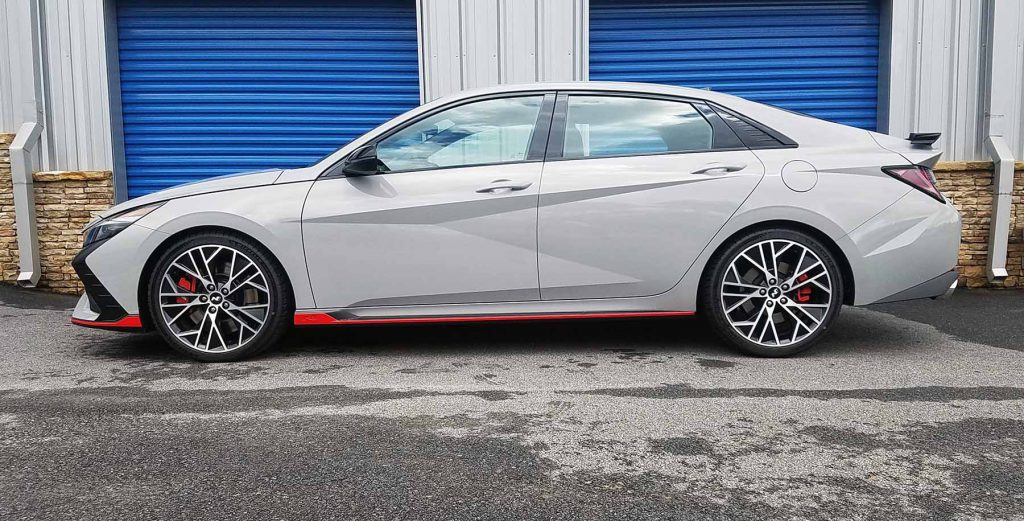
Of these rivals, the Civic Type R is the closest conceptual match—though we don’t know exact specs yet on the new model, it’s a safe bet that it will be pricier and more powerful than the outgoing-generation version (which started at around $39,000 and made 306 horsepower). The rally-bred Subaru WRX has 271 horsepower and standard AWD, and runs from about $30K-$43K to start; it’s focused as much on all-weather, rally-terrain performance as it is on track driving. The Jetta GLI starts at about $32K and has 221 hp, and the Golf GTI runs from about $31K-$39K and has 241 hp. Both are impressive driver’s cars for the money (particularly the Golf GTI), but neither is as aggressively tuned as the Elantra N.
Yet another Fast and Furious movie (or two, or four) is almost as sure as the sunrise, but considering the overall direction the auto industry is moving in these days, pocket-rocket fun machines like these Ns might not be around for much longer. Enjoy them while you can.
Test Drive: 2020 Mazda MX-5 Miata RF Grand Touring
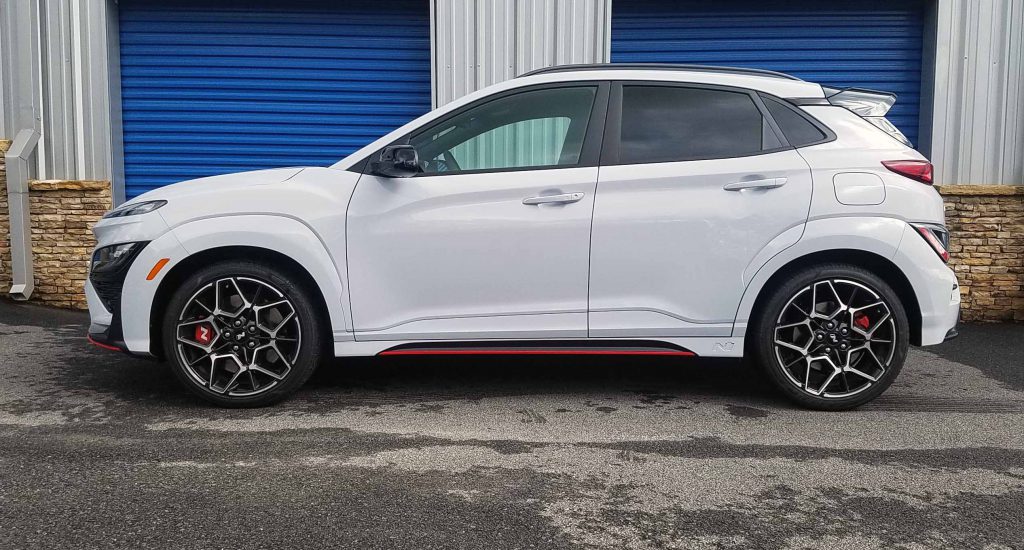
Listen to the Car Stuff Podcast
2022 Hyundai Elantra N and Kona N Gallery
(Click below for enlarged images)

